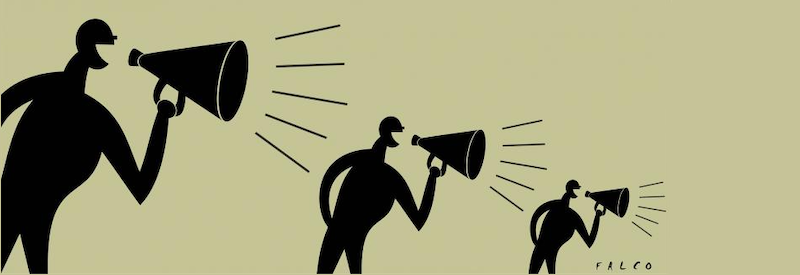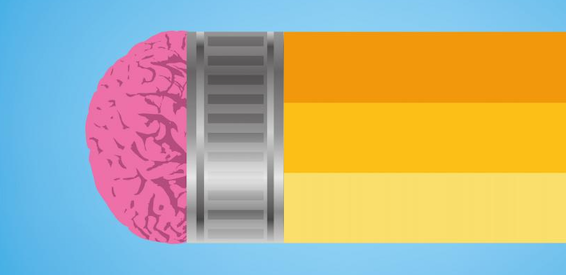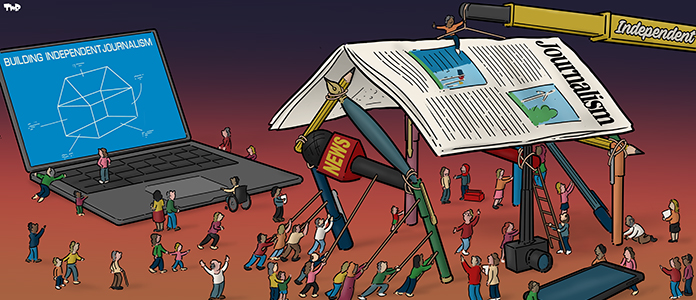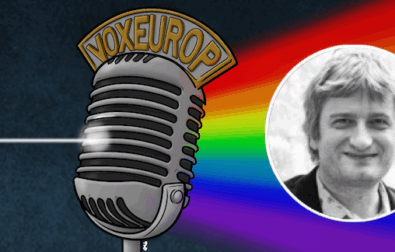Fabian is dribbling a football. His daughter Josefine*, just a few months old, is strapped to his chest in a baby carrier. He and his partner Anna became parents thanks to an egg donation from Estonia.
When she was younger, Anna underwent an operation in which both her ovaries were removed. “It was always clear that we would have to go to a fertility clinic and use egg donation to have a child”, she explains. In Austria, where Fabian and Anna live, egg donation has been permitted since 2015. In practice, however, there are hardly any donors. Austria has prohibited both the payment of money for egg donation and the trade in gametes. Anna and Fabian therefore turned to other EU countries.
Their case is not unique. People who need medical help to start a family face specific challenges in each EU country. In Austria, infertility treatment is only available to couples. Since 2015, this includes lesbian couples.
The couples can apply to Austria's fund for in-vitro fertilization (IVF), which covers 70% of the cost. The fund, operated by the health ministry, pays for up to four cycles of treatment. A known reproductive disorder must exist and the treatment must be performed before the age of 40. However, single women are excluded. And those who, like Anna and Fabian, need an egg donation must pay for it out of their own pocket.
A €1,000 budget
Half of all egg donations in the EU are made by Spanish women. More than a third are destined for foreign patients. Alba made her first egg donation in the spring of 2023 in Madrid. She wanted to help others, she explains. “I've always thought that a child born from egg donation should be considered as [a] particularly happy [event], because it shows that [the child] was really wanted.”
Alba made a second egg donation for financial reasons. “The first time, I left the clinic with an envelope containing €1,000 in denominations of 50.”
That sum corresponds to the €900 average for Spain as estimated by the European Society of Human Reproduction and Embryology (ESHRE). It is a relatively high figure for the EU, although not the highest. In Spain, a quarter of donors are students. Their identity is protected: parents and children do not know who donated the eggs.
For Anna and Fabian, egg donation should not be anonymous. “We've always wanted Josefine to know her history”, says Anna. And “to have the opportunity to meet this person if it's important to her or if she needs this piece of the puzzle.”
In around half of EU countries, that is impossible. Anna and Fabian have found a small fertility clinic that works in collaboration with an egg bank in Estonia. This will give their child the chance to make contact with the donor at least once when he or she comes of age.
Golden goose
The clinic and Estonian egg bank initially searched for a donor who resembled Anna. They soon received a short, anonymous list of potential donors. It featured the individuals’ eye colour, hair colour, weight, height, hobbies and educational background. “The moment we received this list was strange”, Anna recounts. “Was it so important that she had blond or brown hair or that her eye colour was the same?” Instead of studying lists, Anna and Fabian decided to try with the first donor. “In the end, we figured it wasn't that important,” Fabian explains, ”because the baby [would be] in Anna's womb anyway.”
Fabian's sperm and the donor's eggs were fertilised in Estonia. Three embryos were created and sent to the fertility clinic in Austria. Anna became pregnant on the first attempt, only to lose the foetus at seven weeks. The second transfer also failed. After tests and a series of perfusions, the third and final time was the right one. Josefine was born after a “dream pregnancy”.
“When it comes to embryo transfer treatment, the support is excellent”, says Anna. “The IVF fund really does cover a lot of the costs. But if you depend on donors, you're helpless." In total, they spent around €10,000 on egg donation, treatments and tests. “We call her our golden goose,” says Fabian, looking at Josefine.
In most countries, couples are supported in their ambition to have children. But single women have fewer options. According to the association Fertility Europe, single women can access sperm donation in 37 European countries and egg donation in 31. But Austrian women who wish to become mothers without a partner have no choice but to go abroad.
Lost in the jungle
Ariane* is one of them. On turning forty, she decided to take the leap. “I'll go it alone”, she told herself. “I don't want, in five years' time, to regret not having had a child because I didn't find the right partner.”
From the outset, it was clear that she would have to travel abroad. But information was hard to come by. “It's different in every country, sometimes even from one clinic to another”, recounts Ariane. “Laws vary. Age limits are different everywhere. Some countries only accept couples. It's a real jungle.”
‘I think it’s outrageous that a single woman should be so stigmatised’
She soon came across Cryos International. Based in Aarhus, Denmark, this company claims to be the world's largest egg and sperm bank, and to have supplied over 100 countries. Since its beginnings in the 1980s, the firm has made Denmark one of Europe's most popular destinations for fertility treatment. Legislation is liberal, and medically assisted procreation is commonplace. Around 10% of Danish babies are born using such technologies. Many are the children of single mothers.
Ariane browsed hundreds of donor profiles. “I decided then that I needed a donor who wasn't anonymous”, she explains. “Otherwise, I wouldn't have felt comfortable. It was too scary.”
The profile of a particular Danish student caught her eye. Ariane travelled to Denmark and underwent three IVF treatments. None of them resulted in pregnancy. Then came the Covid-19 pandemic.
“I panicked”, she recalls. With planes grounded, she couldn't return to Denmark. Her only option was Munich. In Bavaria, IVF is authorised for single women. And the city was reachable by train. Ariane underwent three more cycles in Germany, but without success. “It was really frustrating, I was often tempted to give up”, she reflects.
Double donation
As soon as the restrictions were lifted, Ariane returned to Denmark. For the first time, the pregnancy test was positive. Unfortunately, the outcome was an early miscarriage. Despite promising signs, subsequent attempts did not result in a viable pregnancy either. “At that point, the doctors explicitly advised me to go for egg donation”, she recounts. “I was 45 at the time.”
Ariane found the idea hard to accept. She took a six-month break to think things over. “I was in shock”, she says. By this stage, she had passed the age limit for treatment in Denmark and for adoption in Austria. She decided to make one last attempt, and opted for egg donation. At this point, Ariane encountered a problem that was similar everywhere: “In most countries, it's the clinics or doctors who choose the donor.” She would at least like to see a photo of the woman, to get an idea. Like Anna and Fabian, she ended up in Estonia.
In Tallinn, Ariane found a clinic where she could undergo IVF treatment with the donor of her choice. Single people are also accepted, and she had not yet reached the age limit in force there. “It was like finding a needle in a haystack”, says Ariane. Finally, after nine IVF cycles, sixteen transfers and trips to three EU countries, she succeeded. Ariane became pregnant and gave birth to a son.
“I think it's outrageous that a single woman should be so stigmatised”, she says today. In Austria, not only is sperm donation forbidden for single women, but so is “social freezing”, i.e. the harvesting and freezing of eggs without medical necessity.
With age, fertility declines and the risk of genetic malformations increases. The possibility of using already-harvested eggs at a later date would limit the financial, physical and psychological consequences of an unfulfilled desire for a child. “I'd do it a thousand times over”, says Ariane today. “The result makes me happy every day. It was worth it.”
*First names have been changed.
👉 Original article on Der Standard
🤝 This article was produced as part of the PULSE collaborative project, with the participation of Andrea Muñoz from El Confidencial.
Do you like our work?
Help multilingual European journalism to thrive, without ads or paywalls. Your one-off or regular support will keep our newsroom independent. Thank you!













Join the discussion
Become a member to translate comments and participate